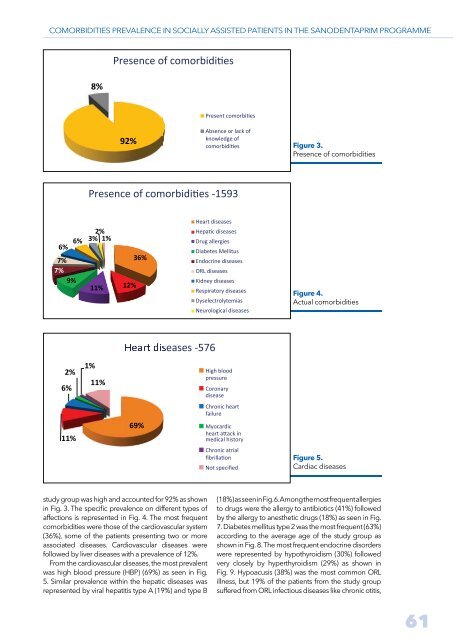Stomatology Edu Journal 1/2014
Create successful ePaper yourself
Turn your PDF publications into a flip-book with our unique Google optimized e-Paper software.
oral implantology<br />
Figure 5. Cone Beam CT scan<br />
Figure 6. Occlusal view of maxillary arch during<br />
implant placement<br />
Figure 7. Tooth arrangement in wax<br />
without the buccal flange<br />
are difficult to apply porcelain to and porcelain<br />
fracture is challenging and costly to repair. Also,<br />
loss of a strategic implant may compromise the<br />
entire prosthesis. Hygiene can be challenging<br />
for some patients, especially those with limited<br />
dexterity (16).<br />
Case Report<br />
A 45-year-old female patient presented to the<br />
Advanced <strong>Edu</strong>cation Program in Prosthodontics at<br />
the Baltimore College of Dental Surgery, with the<br />
following chief complaint: “I would like to have my<br />
teeth fixed.” Patient said that she never had pretty<br />
teeth and now she is ready to do something to<br />
improve her smile. Patient had lost her teeth mainly<br />
due to periodontal disease.<br />
She showed some facial asymmetry, scarring on<br />
the left corner of the mouth, pronounced labionasal<br />
folds and lip asymmetry during smiling (Fig.<br />
1). Patient had a convex profile with adequate lip<br />
support (Fig. 2).<br />
Intraoral examination revealed missing posterior<br />
teeth, retained root tips and periodontally involved<br />
maxillary anterior teeth (Fig. 3). Mandibular range<br />
of motion was restricted, especially maximum<br />
Figure 8. Esthetic try-in to determine the necessity<br />
of a buccal flange<br />
opening which was 30mm and right laterotrusive,<br />
which was 1-2 mm.<br />
Patient’s radiologic examination revealed<br />
multiple root tips, periodontally involved teeth and<br />
a horizontal root fracture of tooth #11. Panoramic<br />
radiograph showed abnormal temporomandibular<br />
left joint due to a car accident during early age, with<br />
otherwise normal trabecular bone pattern. (Fig. 4).<br />
A problem list was put together before<br />
establishing the final treatment plan.<br />
The patient’s maxillary arch anatomy represented<br />
a challenge especially on her left side, where she<br />
had a pronounced horizontal discrepancy between<br />
the maxillary and the mandibular alveolar ridge<br />
crest and also an increased inter-arch distance.<br />
The patient’s desire was to have a fixed final<br />
prosthesis, however she refused any grafting<br />
procedures. She was educated about the<br />
complexity of her treatment plan and was<br />
explained that a fixed prosthesis might not be<br />
possible in her case.<br />
All maxillary teeth were extracted atraumatically<br />
and an immediate maxillary complete denture<br />
was fabricated. The patient was very pleased<br />
with the esthetics of the denture, which allowed<br />
54 Stoma.eduJ (<strong>2014</strong>) 1 (1)




